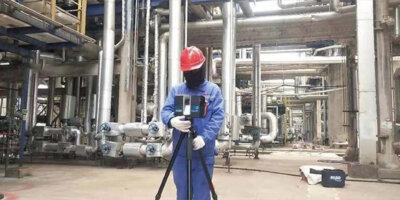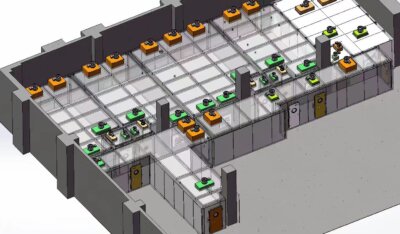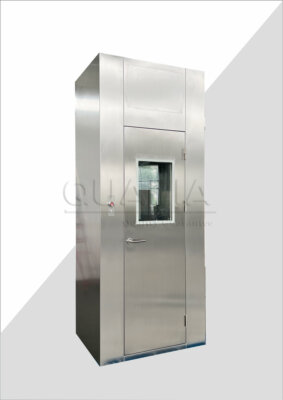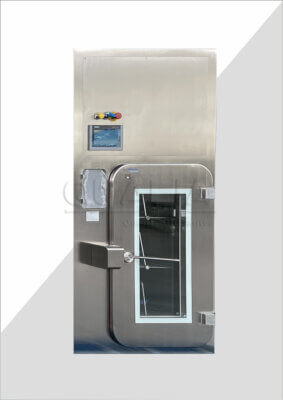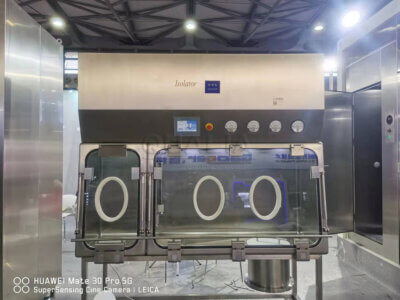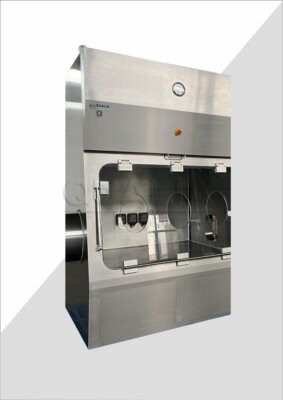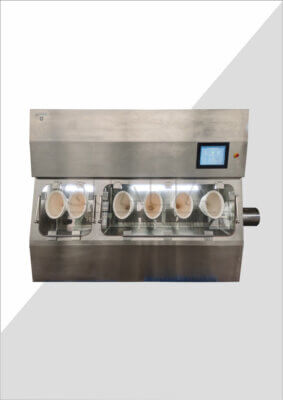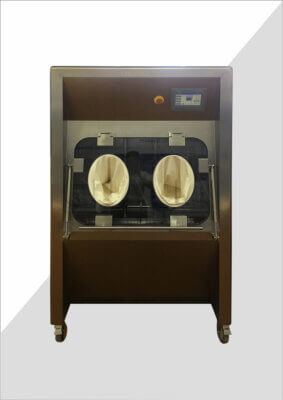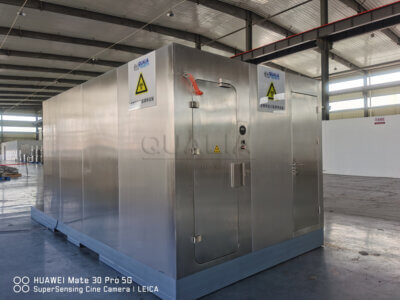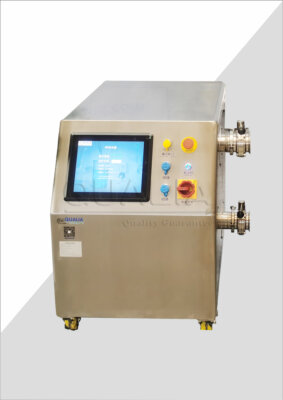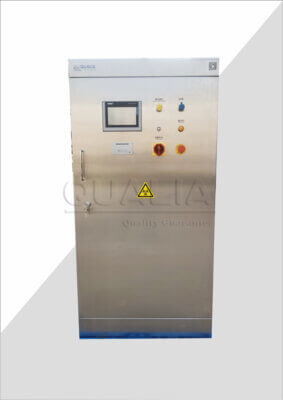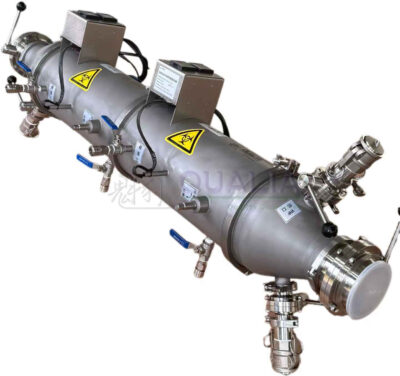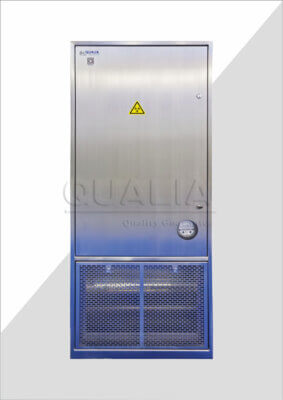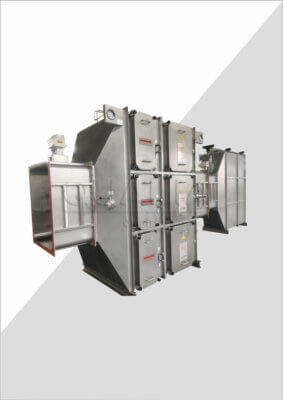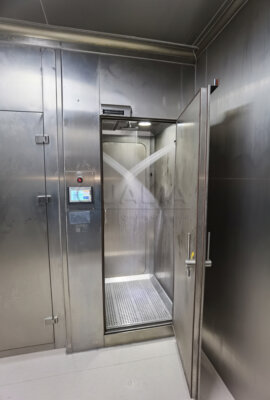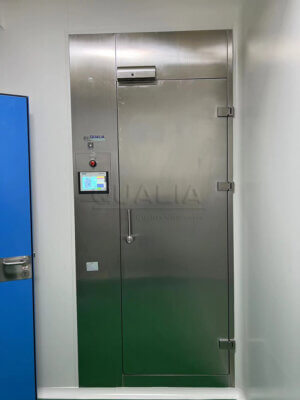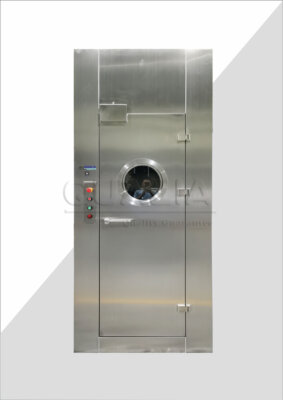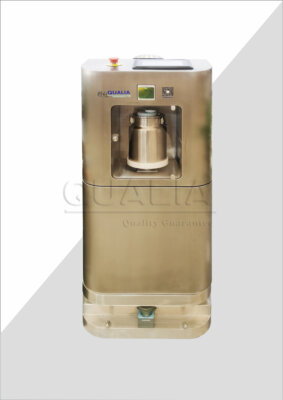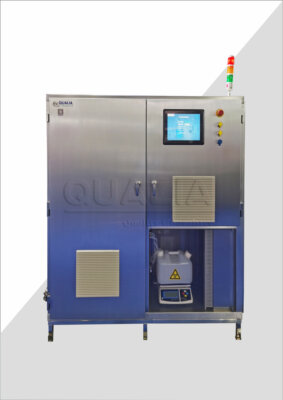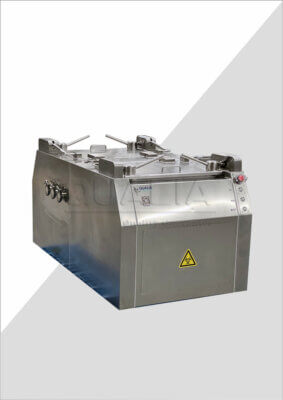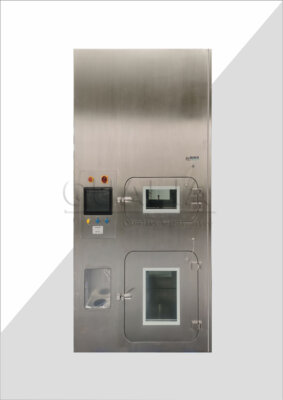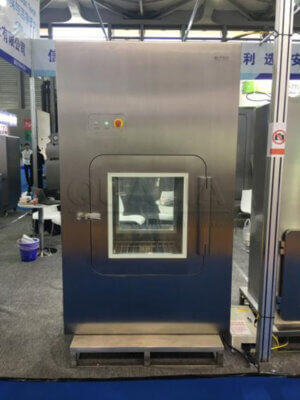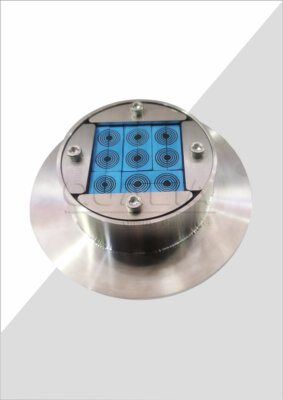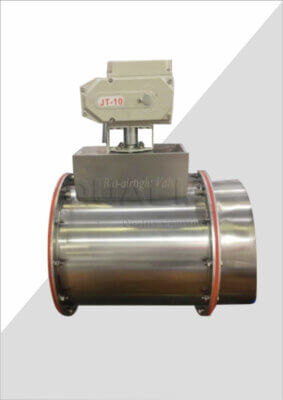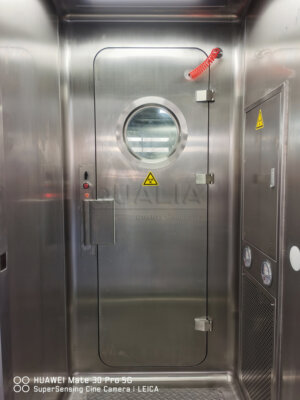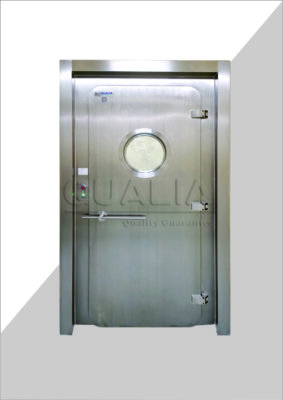Portable decontamination equipment has become increasingly crucial in our rapidly changing world, where the need for quick and effective responses to chemical, biological, radiological, and nuclear (CBRN) incidents is more pressing than ever. As we look ahead to 2025, the landscape of essential portable decontamination equipment is evolving to meet new challenges and incorporate cutting-edge technologies. This article will explore the latest advancements and must-have tools for emergency responders, healthcare professionals, and industry workers who rely on these life-saving devices.
From compact, high-efficiency decontamination showers to versatile, multi-purpose cleansing solutions, the realm of portable decontamination equipment is expanding to offer more comprehensive and user-friendly options. We'll delve into the key features that make certain equipment stand out, the technological innovations driving the industry forward, and the practical considerations for selecting and implementing these vital tools in various scenarios.
As we transition into our in-depth exploration of essential portable decontamination equipment for 2025, it's important to recognize the critical role these tools play in safeguarding public health and safety. The ability to quickly and effectively neutralize hazardous substances can mean the difference between containment and catastrophe. With this in mind, let's examine the cutting-edge solutions that are shaping the future of decontamination.
The global portable decontamination equipment market is projected to experience significant growth, driven by increasing awareness of CBRN threats and the need for rapid response capabilities in both military and civilian sectors.
What are the latest advancements in portable decontamination showers?
Portable decontamination showers have long been a cornerstone of emergency response and hazardous material handling. In recent years, significant advancements have been made to improve their efficiency, portability, and ease of use.
The latest models of portable decontamination showers feature lightweight, collapsible designs that can be quickly deployed in various environments. These showers often incorporate high-pressure, low-volume water systems that maximize decontamination effectiveness while minimizing water usage.
One of the most notable improvements in portable decontamination showers is the integration of smart technology. Some advanced models now include sensors that can detect the presence of specific contaminants and adjust the decontamination process accordingly. This level of automation not only enhances the efficacy of the decontamination but also reduces the risk of human error.
Next-generation portable decontamination showers are equipped with built-in heating systems, allowing for temperature-controlled water delivery that enhances the removal of certain chemical and biological agents.
| Feature | Benefit |
|---|---|
| Collapsible design | Easy transport and storage |
| Smart sensors | Automated contaminant detection |
| Heated water system | Improved decontamination efficacy |
| Low water consumption | Extended operation in remote locations |
As we look towards 2025, portable decontamination showers are expected to become even more sophisticated, with some models incorporating UV light disinfection and recyclable water systems for extended use in resource-limited environments.
How are multi-purpose decontamination solutions changing the game?
The evolution of multi-purpose decontamination solutions is revolutionizing the way we approach hazardous material incidents. These versatile products are designed to be effective against a wide range of contaminants, from chemical warfare agents to toxic industrial chemicals.
Modern multi-purpose decontamination solutions often come in the form of foams, gels, or powders that can be easily applied to various surfaces and equipment. They are formulated to neutralize or absorb contaminants quickly, reducing the risk of secondary exposure and facilitating safe cleanup procedures.
One of the most significant advantages of these multi-purpose solutions is their ability to simplify the decontamination process. Instead of carrying multiple specialized products, responders can rely on a single, comprehensive solution that addresses a broad spectrum of threats.
Advanced multi-purpose decontamination solutions now incorporate nanotechnology, enabling more efficient neutralization of contaminants at the molecular level and providing longer-lasting protective barriers on treated surfaces.
| Solution Type | Application Method | Decontamination Time |
|---|---|---|
| Foam | Spray | 5-10 minutes |
| Gel | Brush or roller | 10-15 minutes |
| Powder | Sprinkle or air blast | 2-5 minutes |
As we approach 2025, we can expect to see further refinements in multi-purpose decontamination solutions, with a focus on environmentally friendly formulations and enhanced effectiveness against emerging threats.
What role does portable vapor hydrogen peroxide (VHP) technology play in decontamination?
Portable vapor hydrogen peroxide (VHP) technology has emerged as a game-changer in the field of decontamination, offering a powerful and versatile solution for a wide range of applications. QUALIA has been at the forefront of developing advanced VHP systems that are both effective and portable.
VHP technology utilizes hydrogen peroxide vapor to decontaminate enclosed spaces, equipment, and sensitive electronics. The vapor penetrates even hard-to-reach areas, providing thorough disinfection without leaving residues or causing damage to materials.
One of the key advantages of portable VHP systems is their ability to decontaminate large areas quickly and efficiently. These systems can be easily transported and set up in various environments, from healthcare facilities to industrial settings and emergency response scenarios.
Portable VHP generators can achieve a 6-log reduction of bacterial spores in less than an hour, making them one of the most efficient decontamination methods available for enclosed spaces.
| VHP System Feature | Benefit |
|---|---|
| Portable design | Easy transport and setup |
| No residue | Safe for sensitive equipment |
| Rapid cycle time | Quick turnaround for treated areas |
| Broad spectrum efficacy | Effective against various pathogens |
Looking ahead to 2025, we can anticipate further miniaturization of VHP technology, making it even more portable and accessible for a wider range of applications. The portable decontamination equipment offered by QUALIA is leading this trend, providing compact yet powerful solutions for decontamination needs.
How are personal protective equipment (PPE) decontamination systems evolving?
The COVID-19 pandemic has highlighted the critical importance of effective PPE decontamination systems, particularly in healthcare settings. As we move towards 2025, these systems are becoming more sophisticated and tailored to the specific needs of various industries.
Modern PPE decontamination systems are designed to handle a high volume of equipment quickly and efficiently. Many now incorporate multiple decontamination methods, such as UV-C light, hydrogen peroxide vapor, and ozone treatment, to ensure comprehensive disinfection.
One of the most significant advancements in PPE decontamination is the development of systems that can clean and disinfect equipment without compromising its integrity. This is particularly important for items like N95 respirators, which must maintain their filtration efficiency after decontamination.
Advanced PPE decontamination systems can now process up to 80,000 masks per day, with some models achieving a 99.9999% reduction in bacterial spores and viruses without degrading mask performance.
| Decontamination Method | Processing Time | Capacity (masks/cycle) |
|---|---|---|
| UV-C Light | 30 minutes | 50-100 |
| Hydrogen Peroxide Vapor | 2-3 hours | 5,000-10,000 |
| Ozone Treatment | 2 hours | 1,000-2,000 |
As we approach 2025, we can expect to see more automated and AI-driven PPE decontamination systems that can adapt to different types of equipment and contaminants, further streamlining the process and reducing the risk of human error.
What innovations are driving portable air decontamination technology?
Portable air decontamination technology has become increasingly important in various settings, from healthcare facilities to public spaces. The latest innovations in this field are focused on improving filtration efficiency, reducing energy consumption, and enhancing portability.
Advanced portable air purifiers now incorporate multi-stage filtration systems that can capture particles as small as 0.1 microns. Many units also feature UV-C light or photocatalytic oxidation technology to neutralize airborne pathogens.
One of the most exciting developments in portable air decontamination is the integration of smart sensors and IoT connectivity. These features allow for real-time air quality monitoring and automated adjustment of filtration settings based on environmental conditions.
Next-generation portable air decontamination units can achieve up to 99.99% removal of airborne particles and pathogens while consuming up to 50% less energy compared to traditional HEPA filtration systems.
| Feature | Benefit |
|---|---|
| Multi-stage filtration | Comprehensive air purification |
| UV-C light | Pathogen neutralization |
| Smart sensors | Adaptive air quality control |
| IoT connectivity | Remote monitoring and management |
Looking ahead to 2025, we can expect to see more compact and powerful portable air decontamination units that can be easily integrated into various environments, from office spaces to emergency response vehicles.
How are portable decontamination systems addressing water purification needs?
Water decontamination is a critical aspect of emergency response and disaster relief efforts. Portable water purification systems have evolved significantly in recent years, offering more efficient and versatile solutions for producing safe drinking water in challenging environments.
Modern portable water decontamination systems often utilize a combination of filtration, UV disinfection, and chemical treatment to remove a wide range of contaminants, including bacteria, viruses, and chemical pollutants. Many of these systems are designed to be operated with minimal training, making them ideal for use in emergency situations.
One of the most notable advancements in portable water decontamination is the development of systems that can purify water from virtually any source, including brackish or contaminated water. These systems often employ advanced membrane technologies, such as reverse osmosis, to produce potable water quickly and efficiently.
State-of-the-art portable water decontamination systems can now produce up to 10,000 liters of safe drinking water per day from contaminated sources, with some models achieving removal rates of 99.9999% for bacteria and 99.99% for viruses.
| Technology | Contaminants Removed | Production Rate (L/hr) |
|---|---|---|
| Ultrafiltration | Bacteria, protozoa | 100-500 |
| Reverse Osmosis | Dissolved solids, chemicals | 50-200 |
| UV Disinfection | Viruses, bacteria | 1,000-5,000 |
As we look towards 2025, we can anticipate further improvements in the energy efficiency and portability of water decontamination systems, with some models potentially integrating renewable energy sources for off-grid operation.
What advancements are being made in portable decontamination for sensitive electronics?
The decontamination of sensitive electronics poses unique challenges, as traditional wet decontamination methods can cause damage to delicate components. Recent advancements in this field have focused on developing gentle yet effective decontamination techniques that preserve the functionality of electronic devices.
One of the most promising developments in this area is the use of dry fog technology. This method creates a fine mist of disinfectant particles that can penetrate tight spaces and complex geometries without leaving residual moisture.
Another innovative approach is the use of plasma-based decontamination systems. These devices generate reactive oxygen species that can effectively neutralize contaminants on electronic surfaces without the need for liquids or high temperatures.
Advanced dry fog decontamination systems can achieve a 6-log reduction in bacterial contamination on electronic surfaces within 30 minutes, without causing any damage to sensitive components.
| Method | Decontamination Time | Residue | Effectiveness |
|---|---|---|---|
| Dry Fog | 30-60 minutes | Minimal | High |
| Plasma | 15-30 minutes | None | Very High |
| UV-C Light | 5-10 minutes | None | Moderate |
As we approach 2025, we can expect to see more specialized portable decontamination solutions for electronics, potentially incorporating AI-driven systems that can adapt the decontamination process based on the specific type and sensitivity of the device being treated.
How are ergonomics and user-friendliness being improved in portable decontamination equipment?
The effectiveness of portable decontamination equipment is not solely determined by its technical capabilities; user-friendliness and ergonomic design play crucial roles in ensuring proper and efficient use, especially in high-stress situations. Manufacturers are increasingly focusing on these aspects to improve the overall performance and adoption of their equipment.
Recent improvements in ergonomics include the development of lightweight, modular designs that can be easily assembled and operated by a single person. Many portable decontamination systems now feature intuitive controls and clear, easy-to-read displays that guide users through the decontamination process.
Another significant advancement is the incorporation of automated setup and calibration features. These systems can quickly adjust to environmental conditions and contaminant types, reducing the need for manual intervention and minimizing the risk of user error.
Next-generation portable decontamination equipment incorporates augmented reality (AR) interfaces that provide real-time guidance and training to operators, reducing setup time by up to 50% and improving overall decontamination effectiveness.
| Feature | Benefit |
|---|---|
| Modular design | Easy assembly and customization |
| Intuitive controls | Reduced training requirements |
| Automated calibration | Improved accuracy and efficiency |
| AR interface | Enhanced user guidance and support |
Looking ahead to 2025, we can anticipate further improvements in the human-machine interface of portable decontamination equipment, with voice-activated controls and AI-assisted operation becoming more common.
In conclusion, the landscape of essential portable decontamination equipment for 2025 is characterized by significant technological advancements, improved efficiency, and enhanced user-friendliness. From sophisticated portable decontamination showers to versatile multi-purpose solutions and cutting-edge VHP systems, the industry is evolving to meet the complex challenges of CBRN threats and environmental hazards.
The integration of smart technologies, such as IoT connectivity and AI-driven systems, is enabling more adaptive and efficient decontamination processes. Meanwhile, improvements in ergonomics and user interface design are making these critical tools more accessible and effective in high-pressure situations.
As we move towards 2025, the focus on portability, versatility, and rapid deployment will continue to drive innovation in the field of decontamination equipment. The development of more environmentally friendly solutions and the incorporation of renewable energy sources will also play a significant role in shaping the future of this essential industry.
Ultimately, the advancements in portable decontamination equipment are not just technological achievements; they represent critical improvements in our ability to respond to emergencies, protect public health, and ensure the safety of those on the front lines of hazardous material incidents. As these technologies continue to evolve, they will undoubtedly play an increasingly vital role in our global preparedness and response capabilities.
External Resources
- Portable Decontamination Shower System – All Hands Fire – This resource describes the Husky Decon Shower System, a lightweight, collapsible, and low-pressure decontamination shower system.
- FAST-ACT Portable Decontamination Kit – Hazmat Resource, Inc. – This page details the FAST-ACT Portable Decontamination Kit, designed for emergency, operational, or technical decontamination of surfaces, gear, and equipment.
- MOBILE CBRN DECONTAMINATION – Kärcher – This PDF brochure outlines Kärcher's mobile CBRN decontamination systems, including portable pressure spraying devices, hot water modules, and vacuum decontamination technology.
- Decontamination Shower Systems – Husky Portable Containment – This site provides information on Husky's complete decon shower systems, which are lightweight, collapsible, and low-pressure.
Related Contents:
- Portable Air Showers: Flexible Decontamination
- Cleanroom Decontamination: Portable Options 2025
- Comprehensive Portable Decontamination Solutions
- Hospital Decontamination: Portable Solutions 2025
- Lab-Grade Portable Decontamination Systems 2025
- Top Portable Decontamination Units of 2025
- Cutting-Edge Portable Decontamination Tech 2025
- cRABS or Isolators: Cost Analysis for Pharma Facilities
- Portable VHP Generators: A Game-Changer in Decontamination


